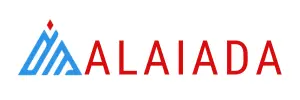Keep Production Running: Roofing Upgrades with Minimal Downtime

Shutting a plant for roof works is rarely an option. Production schedules, inbound logistics, and workforce planning all rely on continuity, which is why the right contractor will design upgrades that keep your lines moving while the roof is renewed, repaired, or insulated.
For complex live sites in the South West, consider Top-Quality Industrial Roofing Services in Bristol as part of a plan that sequences works around your operations, coordinates safe access, and minimises disruption to staff and visitors.
Start with diagnostics that do not stop work
Fast, safe diagnostics let you find the real issues before the first scaffold lift. Drone surveys capture high-resolution imagery and thermal data without closing yards or walkways. This allows condition mapping, leak tracing, and cut-to-fit scopes, which shortens the on-roof program. Industry coverage of UAVs in construction, as seen in ENR’s technology reporting, highlights how rapid aerial inspections reduce risk and speed decision-making.
· Targeted drone and handheld surveys to pinpoint defects
· Clearly staged scopes aligned to your production calendar
· Temporary weatherproofing to keep interiors protected between phases
· Just-in-time materials drops to avoid blocking loading bays
· Quiet-hour activities scheduled for noise-sensitive areas
Access planning that respects safe circulation
Access is where jobs often slow. Good planning keeps people and product flowing. Temporary routes, signage, and escorts maintain segregation between plant traffic and works. MEWP selection, scaffold design, and edge protection are tailored to roof geometry and adjacent processes. Where crane lifts are needed, book windows that avoid shift changes and supplier deliveries. The goal is simple: consistent movement for your teams while operatives work above.
Live-site phasing and out-of-hours working
Phasing is the art of building in slices. Break the roof into manageable zones, complete each zone to a watertight finish, then move on. For sensitive lines or customer-facing areas, schedule night or weekend shifts so the noisiest tasks happen when footfall is low. Trade press has long noted the value of off-peak logistics in busy environments, with publications such as Construction News discussing how careful sequencing and supply coordination cut disruption and improve productivity.
RAMS that prioritise people and production
Robust RAMS are the backbone of live-site works. Expect detailed risk assessments that account for moving plant, fume extraction, fire watch, and weather change. Method statements should include:
· Electrical and process isolations agreed in advance
· Hot-works control, permits, and firefighting equipment
· Dust and noise controls matched to your processes
· Daily briefings that reference live production constraints
· Clear stop-work triggers for weather or unexpected conditions
Keep communication tight, keep momentum high
Daily coordination with your site lead keeps momentum. Short stand-ups confirm access routes, delivery slots, and the next zone’s handover. Digital photo logs and drone progress shots give you instant visibility, while snag lists are closed before a phase ends. The result is a steady rhythm that avoids the stop-start inefficiencies that hurt output.
If you are searching for industrial roofing Bristol expertise that fits around your operations, prioritise partners who lead with diagnostics, plan access as carefully as installation, phase works intelligently, and back everything with tight RAMS and clear communication. That is how you secure a safer roof and a safer program without putting production on pause.










